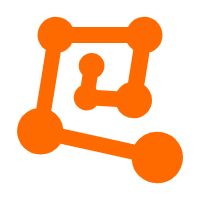In this article, Dr. Sun Fei from Alibaba's Search Department will provide a brief overview of the evolution of neural networks and discuss the latest approaches in the field.
Convolutional neural network has been popular in the field of image processing and widespread real-world applications are now using CNN.
There are two core concepts to Convolutional Neural Networks. One is convolution and the other is pooling. At this point, some may ask why we don't simply use feed-forward neural networks rather than convolutional neural networks. Taking a 1000x1000 image for example, a neural network would have 1 million nodes on the hidden layer. A feed-forward neural network, then, would have 10^12 parameters. At this point it's nearly impossible for the system to learn since it would require an absolutely massive number of estimations.
In this article, we will introduce the neural networks which can be applied to natural language processing (nlp).
Researchers are increasingly interested in the application of the deep learning model for natural language processing (NLP), focusing on the representation and learning of words, sentences, articles, and relevant applications. For example, Bengio et al. obtained a new vector image called word embedding or word vector using the neural network model [27]. This vector is a low-dimensional, dense, and continuous vector representation, and contains semantic and grammatical information of the words. At present, word vector representation influences the implementation of most neural network based NLP methods.
In this article, we will introduce the applications of convolutional neural network (CNN) in the field of computer vision, such as fine-grained image classification, image captioning, visual question answering.
The classic method of fine-grained image classification is to first define different locations on the image, for example, the head, foot, or wings of a bird. Then we have to extract features from these locations, and finally, combine these features and use them to complete classification. This type of method features very high accuracy, but it requires a massive dataset and manual tagging of location information. One major trend in fine-grained classification is training without additional supervision information, instead of using only image notes. This method gets represented by the bilinear convolutional neural network (CNN) method.
In this article, we will introduce some AI chips which can improve your experience to run deep neural network models.
The current advanced AI development strategy is deep learning with a learning process divided into two parts: training and inference. Training usually requires a significant amount of data input, or involves the use of unsupervised learning methods, such as enhanced learning, to create a complex deep neural network model. On the other hand, "Inference" means to take an already well-trained model and, by use of new data, to "infer" a variety of conclusions.
Neural networks and TensorFlow solve many complicated real world problems in a simplified manner. This article explains the same with Python coding, which is very popular because of deep learning.
Alibaba has made its lightweight mobile-side deep learning inference engine, Mobile Neural Network (MNN), open source to benefit more app and IoT developers.
How is the technical framework behind MNN designed? What are future plans regarding MNN? Today, let's have a closer look at MNN.
Introduction to Convolutional Neural Networks for Computer Vision

2,599 posts | 769 followers
FollowAlibaba Clouder - October 30, 2019
Alibaba Clouder - November 4, 2019
Alex - January 22, 2020
Alibaba Clouder - November 5, 2018
Alibaba Clouder - January 9, 2017
Alibaba Clouder - January 24, 2017

2,599 posts | 769 followers
Follow E-MapReduce Service
E-MapReduce Service
A Big Data service that uses Apache Hadoop and Spark to process and analyze data
Learn More Platform For AI
Platform For AI
A platform that provides enterprise-level data modeling services based on machine learning algorithms to quickly meet your needs for data-driven operations.
Learn MoreMore Posts by Alibaba Clouder